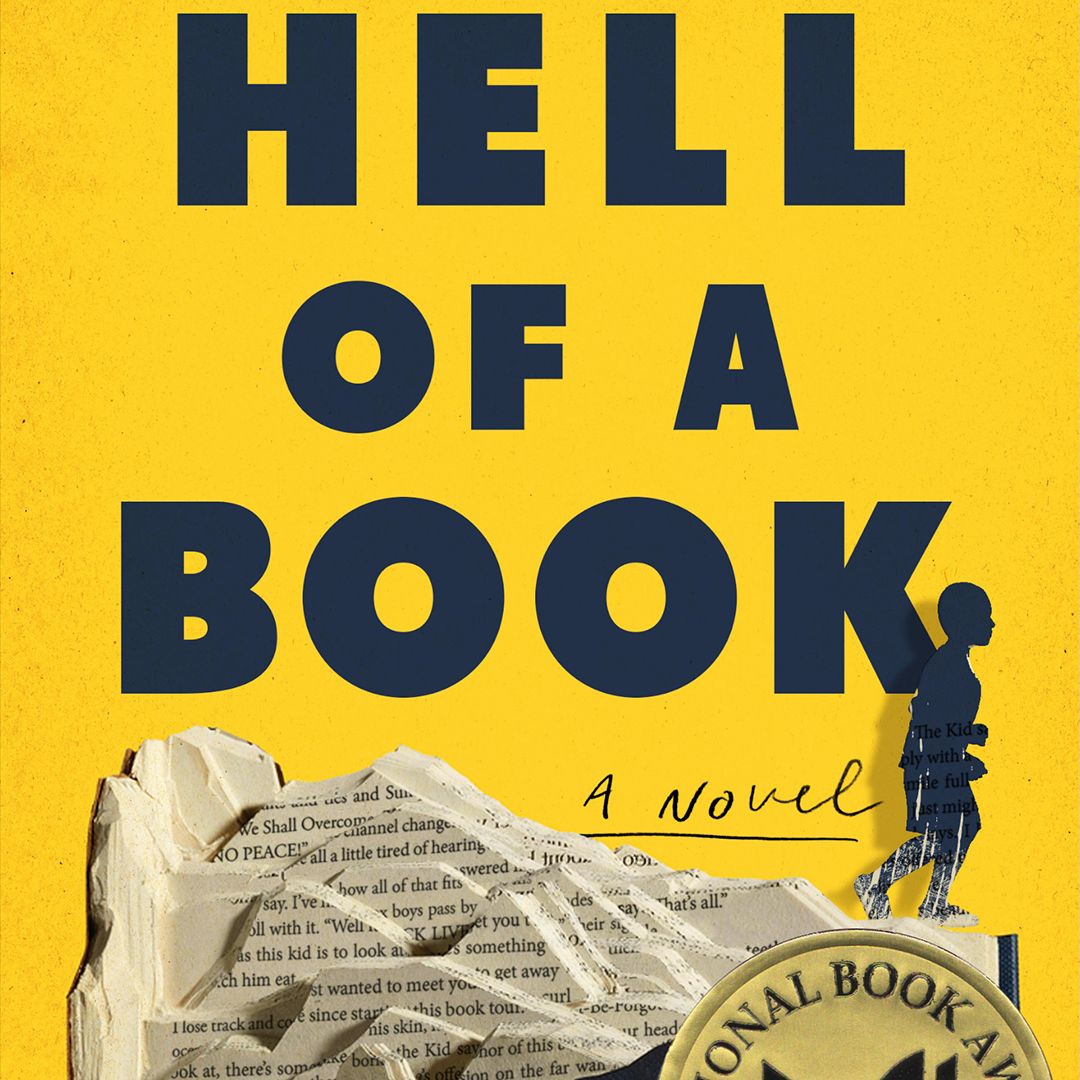
Hell of a Book by Jason Mott
Hell of a Book by Jason Mott is a suspenseful literary novel of meta fiction and surrealism, all of which comments on racism towards Black people in America. This novel is the 2021 National Book Award Winner. The book description from the publisher describes it best: “In Jason Mott's Hell of a Book, a Black author sets out on a cross-country publicity tour to promote his bestselling novel. That storyline drives Hell of a Book and is the scaffolding of something much larger and urgent: since Mott's novel also tells the story of Soot, a young Black boy living in a rural town in the recent past, and The Kid, a possibly imaginary child who appears to the author on his tour. For while this heartbreaking and magical book entertains and is at once about family, love of parents and children, art and money, it's also about the nation's reckoning with a tragic police shooting playing over and over again on the news. And with what it can mean to be Black in America. Who has been killed? Who is The Kid? Will the author finish his book tour, and what kind of world will he leave behind? Unforgettably told, with characters who burn into your mind and an electrifying plot ideal for book club discussion, Hell of a Book is the novel Mott has been writing in his head for the last ten years.”
There’s a lot going on in Hell of a Book. One thread is a send-up of the literary establishment with an unnamed, bestselling Black author on a book tour which borders on farcical. We’re introduced to him running naked down a hotel hallway, escaping an angry husband who wants to wring the narrator’s throat for screwing around with his wife. Another thread is the depiction of an unbearably dark-skinned boy named Soot, called that by a bully from school. Soot’s parents love and protect him so much that its untenable, and Soot later witnesses his father killed by a White policeman. Another thread finds the narrator haunted by an apparition he calls the Kid, whose skin is also dark as night, just like Soot’s. The narrator and the Kid are connected by the burden of being Black in America. Are the Kid and Soot the same character? Is the Kid or Soot the narrator’s younger self?
The narrator suffers from a habit of persistent daydreaming, which reveals itself later to be something closer to psychosis. The narrator’s first-person thread follows familiar literary techniques and beats from other great literary novels: the narrator is unnamed and other protagonist Soot attempts to be unseen (The Invisible Man by Ralph Ellison) while the narrator’s psychosis introduces the reader to characters that may or may not exist (Fight Club by Chuck Palahniuk). The Fight Club beats are followed faithfully for a spell in this thread of the book, even introducing a female love interest named Kelly that could be a stand-in for Marla from Fight Club, which was a distraction for this reader. But Mott is too talented a writer to simply sample techniques from other writers, particularly when the narrator reveals that he is aware “why” Kelly shows up at this point in the story. She’s supposed to save him, isn’t she? Ultimately, this thread in the story is subterfuge.
Soot’s thread is told with a tenderness that is heart-wrenching. His parents try to teach him to be unseen so he can be safe. The young boy tries his best to be invisible to please his parents. But when his father is cruelly murdered near their home by a White policeman as Soot and his mother watch from their front porch, the safety of Soot’s world is pulled out from under him. And this is when the threads that Mott has sewn begin to come together into a tapestry of pain. The answer to the lingering question comes into view: are the narrator, Soot, and the Kid the same person? Does it matter if they’re the same person or not? Their commonality as Black people in America ties them together. Their struggles are the same; their struggles are Black America’s struggles. And the psychosis of the narrator is also that of Black America’s, when they expect justice after the killing of Black people at the hands of policemen again and again, yet that justice never comes. The names of the deceased go on for miles throughout America’s history, Black boys and Black men that look strikingly similar.
The unnamed narrator, who is a successful author on the surface, attempts to heal his internal pain with alcohol and sex, but even appearing on the cover of prestigious magazines won’t save him. As all the dead Black people begin to appear to him, watching him from the TV studio audience at a media appearance, or watching him at airports, I was left unnerved by the novel’s end. But the narrator finally confesses with sobering clarity—eruditely and poignantly: “Laugh all you want, but I think learning to love yourself in a country where you’re told that you’re a plague on the economy, that you’re nothing but a prisoner in the making, that your life can be taken away from you at any moment and there’s nothing you can do about it—learning to love yourself in the middle of all that? Hell, that’s a goddamn miracle.” I couldn’t agree more.
I really enjoyed this book and I highly recommend it. I would give this book 5 stars.
Buy the hardcover on Bookshop: https://bookshop.org/a/152/9780593330968

